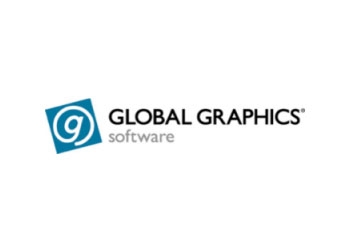A major new release of the Harlequin RIP®, the software engine that drives the printing industry’s highest performing digital presses, is launched today.
Reputed for the quality of its output as well as its speed, the Harlequin RIP transforms design and pre-press data into a format that can be printed and feeds those pages to the press. It’s compatible with a wide range of PDF design tools and compliant with industry standards.
The new version, Harlequin 11, raises the bar in output quality by introducing features to improve inkjet output quality, offers more controls for variable data printing, and contains new features for labels and packaging applications.
Martin Bailey, CTO, Global Graphics Software says, “Global Graphics continues to enhance the Harlequin RIP to maintain its position as the fastest and highest quality rendering engine for production print. We know that our success relies on helping our OEM partners to deliver and ship products that impress their customers, so the new developments in version 11 are specifically designed to address the pain points encountered in real-world print environments, identified either in response to customer requests, or in our own research.”
Harlequin 11 is available in two editions: the Harlequin Host Renderer 11, which powers the Digital Front Ends used in high-volume digital production environments; and, Harlequin MultiRIP 11 for conventional and light digital production printing.
Harlequin Host Renderer 11
Harlequin Host Renderer 11 is an essential component of the digital front ends that power high-performance devices such as HP PageWide Presses. New features include:
- Improvements to inkjet output quality: Inkjet press manufacturers are reaching the limits of what can be achieved with mechanical improvements and have turned to Global Graphics Software to fix their problems using software. With Harlequin Multi-level Digital Screening technology ( see separate press release, Global Graphics raises the bar in inkjet quality with drupa launch) a process that tunes multi-level half-tones, output quality is raised significantly even on challenging media. This feature is also available as a standalone product that is compatible with workflow tools from other vendors including Esko and EFI.
- Even faster variable data printing: The Harlequin RIP already contains Harlequin VariData(TM) to speed up the processing of variable data saved as PDF/VT or PDF. Harlequin 11 introduces a new feature whereby each graphic is rendered only once even if it is used in multiple positions on a page. This is especially valuable when a page layout flexes or when many instances of a direct mail piece or label are imposed together into a single PDF “page” representing an imposed sheet. If PDF/VT files are created using “PDF/VT hints” (described in the ISO standard) the processing speed is even faster. Global Graphics believes that Harlequin 11 is the first RIP to be able to use these hints. Global Graphics is one of the foremost experts in PDF/VT. (See the guide Do PDF/VT Right )
Harlequin MultiRIP 11
This version of the Harlequin RIP is active in thousands of installations around the world. Print service providers who upgrade to Harlequin MultiRIP 11 will benefit from many new productivity features, such as:
- Speed enhancements targeted at image heavy jobs so that in light production printing, where presses are driven by a single RIP, pages are fed even more quickly to the press, increasing productivity so that print service providers can fit more jobs into a shift.
- Quality enhancements such as image snapping; many design and composition tools split what looks like a single large image into tiles when making PostScript® and PDF which can result in fine white lines appearing on the output if the tiles don’t align correctly. Automated snapping identifies and automatically adjusts tiles so that they align exactly.
New features for labels and packaging
In addition to existing features for brand color matching and a selection of screens for flexo, offset and digital production Harlequin 11 introduces:
- The Harlequin Contour Processor™ that intercepts specified spot separations and exports them. Many packaging and label jobs include die lines and other technical separations which often need to be printed for proofing, or for aligning prints and pre-cut media or post-print die cutting. Those separations need to be removed from the raster for production printing. This feature is also useful for wide format plotter/cutters.
- Overriding overprint for white, varnish and metallic: Some special colorants should not knock out of, or be knocked out by, other colorants. A varnish should never knock out of other colors, for instance, while a white ink laid in under other colors should not be knocked out by ‘real’ graphics in other inks. Harlequin 11 includes configurations that allow these overprints to be controlled.











